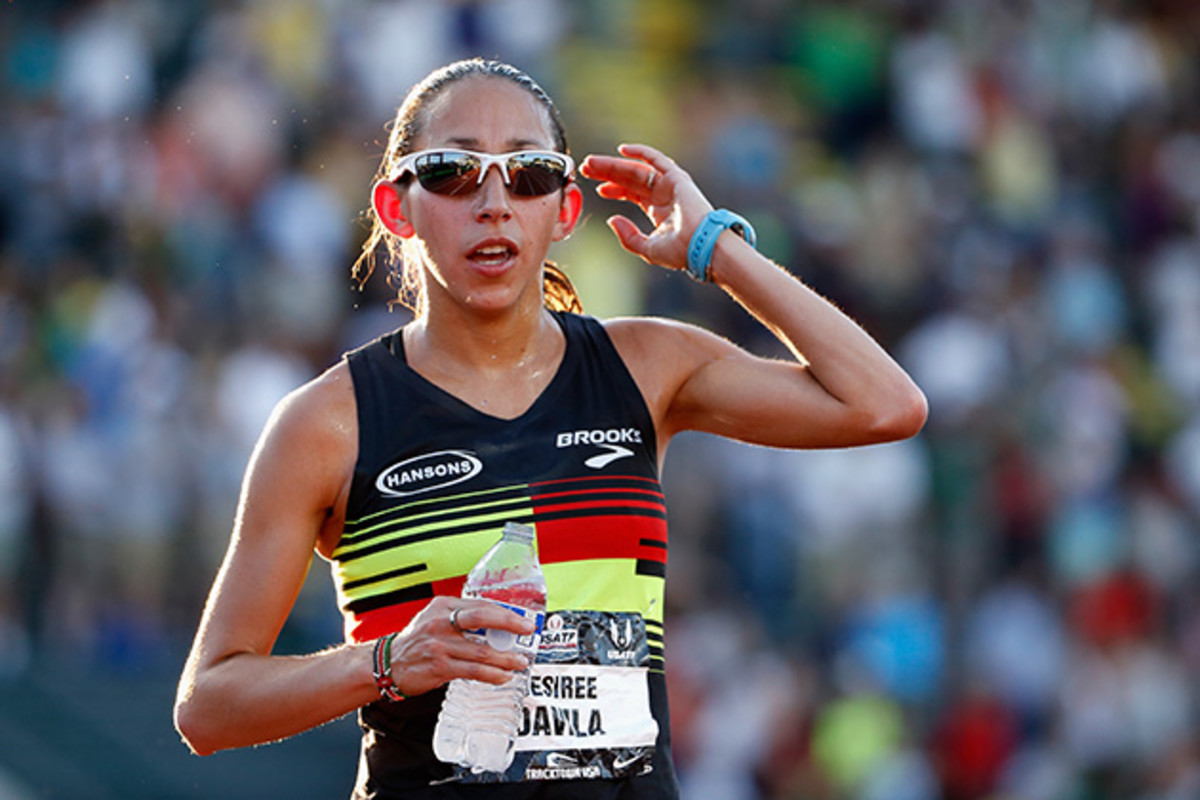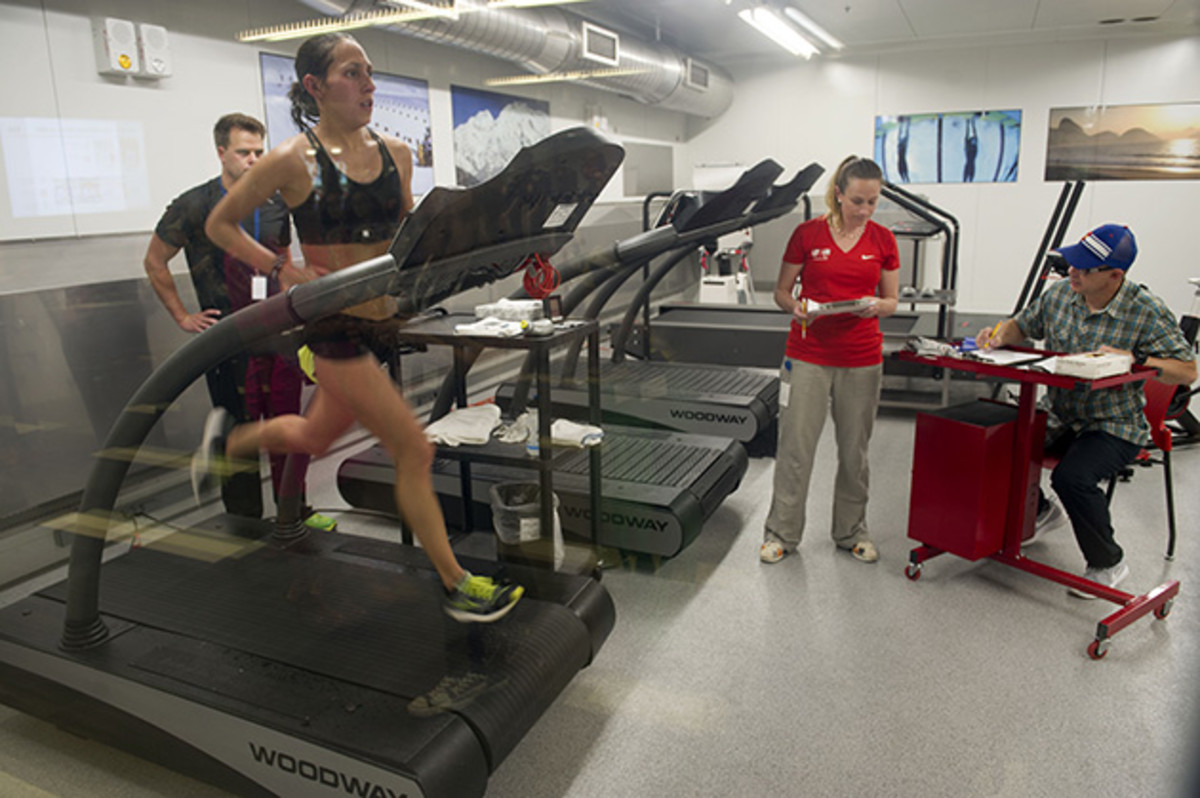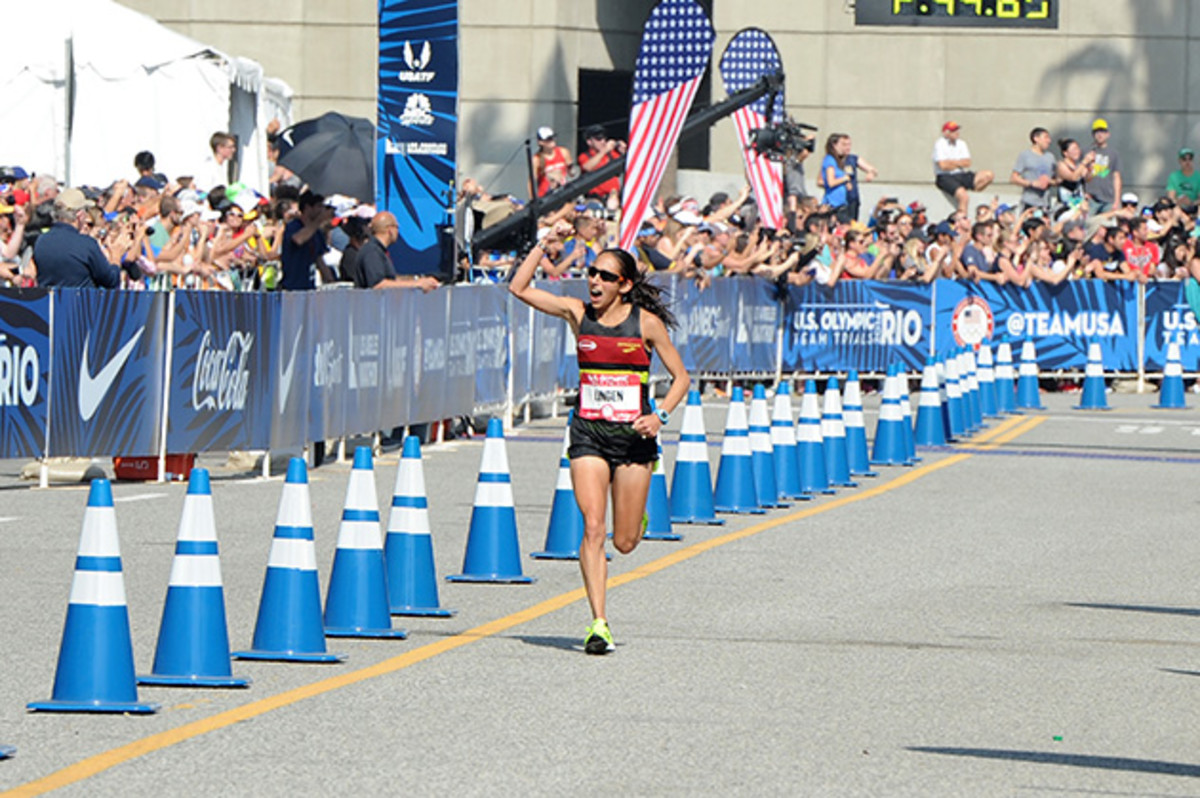Behind the Body: How marathoner Desi Linden trains for 26.2 miles

NEW YORK – Desi Linden packs a big punch within a small build in the U.S. distance running scene. The two-time U.S. Olympian is coming off a runner-up finish at the 2016 U.S. Olympic Marathon Trials in February and preparing to put the U.S. on the medal stand at the 2016 Olympics in Rio de Janeiro.
Linden seeks revenge at the Summer Games after a stress fracture in her femoral shaft in London forced her to drop out of the marathon before the five-kilometer mark. She was second at the 2012 U.S. Olympic Trials and a series of injuries never allowed for her to find her full fitness before the Summer Games.
“I think I kind of struggled coming back from that marathon due to a lot little nagging things and we got to the point in the build-up where we needed to start pressing no matter what the body is telling you,” Linden says. “We got two or three weeks into the segment and when something is nagging just a tiny bit, it can snowball into something much larger. It came to head in late July.”

Linden never regained her full fitness until preparing for the 2014 Boston Marathon but now considers herself at 100% health with no signs of hurt. Linden took a three-week break after Los Angeles and is ready to regroup and put in the necessary work for Rio.
“We were cautious going into L.A. so we can regroup and I’ll feel good. I do feel good now,” Linden says. “I’m conscious of my body and taking care of my body but I don’t feel like I’m being overly cautious where I sacrifice training. I’m going to push as hard as I can and be smarter about it. It’s a delicate balance.”
Linden trained on an indoor treadmill where she ran for an hour at 89 degrees (33 C) and 75% humidity to simulate the conditions for the Olympics. The USOC provided the training session and gave her a pill in morning (3 hours before her run) that allowed them to test and monitoring her core temperature.
Linden will stay in Rochester, Mich., to train for Rio as the average summer highs there are about two degrees warmer than Rio de Janeiro in the next few weeks, according to her coach Keith Hanson.
The women’s Olympic marathon will be held on Sunday, Aug. 14.
• How Sarah Brown ran at Olympic Trials, four months after giving birth
AGE | HEIGHT | WEIGHT |
|---|---|---|
32 years old | 5'1" | 96 lbs. |
Part of her body that is critical to running strong (besides legs): You have to get the core strong. If you’re a runner and have some sort of problem, it could be weak hips. It’s the first thing a PT or chiropractor will tell you. I’m always working on my core. For me that’s planks and ab strength.
Workout essential to marathoning: If I could just one thing, I would do long runs. You can do tempo runs within your tempo.
• Batman in training: Bershawn Jackson's 400 meter hurdles workout
Favorite exercise in the gym: Planks. They’re just really valuable and an easy position to hold.
Favorite workout: Long run.
What her off-season break looks like: I love taking my two weeks off after a marathon segment but I also get in the pool. Not necessarily for aqua-jogging but being in the water and having that buoyancy is beneficial. It seems like a little but it goes a long way.

On how much cross-training she does: As little as possible. If I’m cross-training then it means I’m hurt. I do a little bit of yoga and maybe I should do a little more.
On how to build the base for a marathon: It’s slowly building into it. It depends on whether you’re coming off a big break. It could start with one week at 70 miles, another at 85 or 90 and then just working into those 100-mile weeks. Two or three weeks of mileage and then sprinkle in lighter workouts.
On how long she holds peak mileage: Two or three weeks. You just touch on it and then come down.
• Training to failure: Myth or method to muscle mass and strength gains?
Off-track activities: I grew up playing soccer. I’m not sure if I’m coordinated enough now but I kick around the ball.
On how nutritional intake changes from the beginning of marathon training to race day: In my downtime, my appetite drops. As I pick up my mileage, I’m hungry all the time. I try to put healthy things all the time so I’m snacking on healthy things but I’m not over-the-top.
On counting calories: Not at all. My weight is crazy because if I’m on downtime, I’m 98.6 pounds. If it’s race day, I’m 96.8 at every marathon I’ve every marathon I’ve done. I’ve just dialed in my appetite.
Takeaways from the Kenyans' diets after training there: A lot of Ugali (a cornmeal porridge). That’s a staple at every meal. They’ll sometimes have goat or chicken for protein. I haven’t come home to make a bunch of Ugali but my plate will look similar with a protein, a vegetable and some kind of rice or carb. (Editor’s note:Linden gives credit to her husband for the cooking in her home.)
Pre-race meal: It’s very bland. I go with white rice and sweet potatoes with maybe a plain pasta or a basic marinara spaghetti. It’s really boring.
• Ultra-runner Scott Jurek's interval training tips for the everyday athlete
On staying hydrated during a race: I use a PowerBar electrolyte for the first 20K, where I try to take in eight to 10 ounces every 5K. I switch over to a double latte PowerBar gel that I mix in with water for the rest of the race.
Post-race treat: Pre-race is food for function. Post-race is food for fun. I like a massive burger and beers. Just keep them both coming.
On staying cool during a hot race: Over your head soaking happens. Any time you can wet the skin that’s great because you get a cooling effect from the wind and helps bring the core temperature down. You just delay the slowing down as much as you can.

Future fitness outlook: I haven’t put a cap on that. I’m trying to win one of the World Marathon Majors. I haven’t thought too much about the time it takes to do that but if I felt like I was really sharp and running quick, everyone wants to flirt with the 2:20 mark. I do kind of have limited days in my career so I need to be a little picky in how I do that over the next few years.
Working out with music: If I’m forced to be on a treadmill, I will have music on.
What’s on her iPod: Girl Talk. It’s all this mashed up stuff that leads to a 70s song stuck in my head.
Food guilty pleasure: Definitely donuts. I sneak those in all the time...it’s not even sneaky. I tell myself that I earned it.
Advice for aspiring marathoners: Just be patient. It’s a process. From the very first day, you’ll get out there and think, “Wow. That was hard.” It’s going to be like that for 10 days. You’ll want to quit for 10 days but once you get over the hump, you establish a routine. Getting in shape is hard but being in shape is awesome. Ease into it and stick with it.
